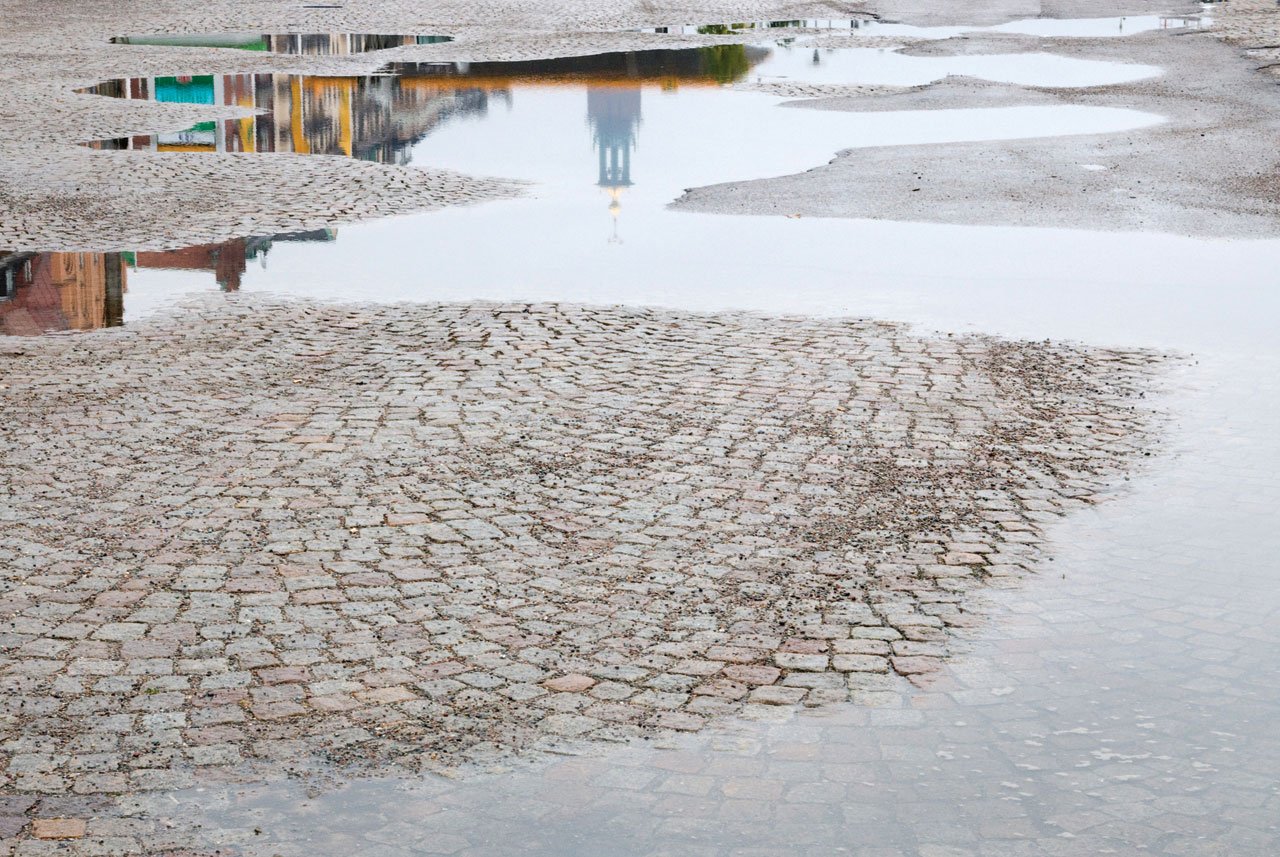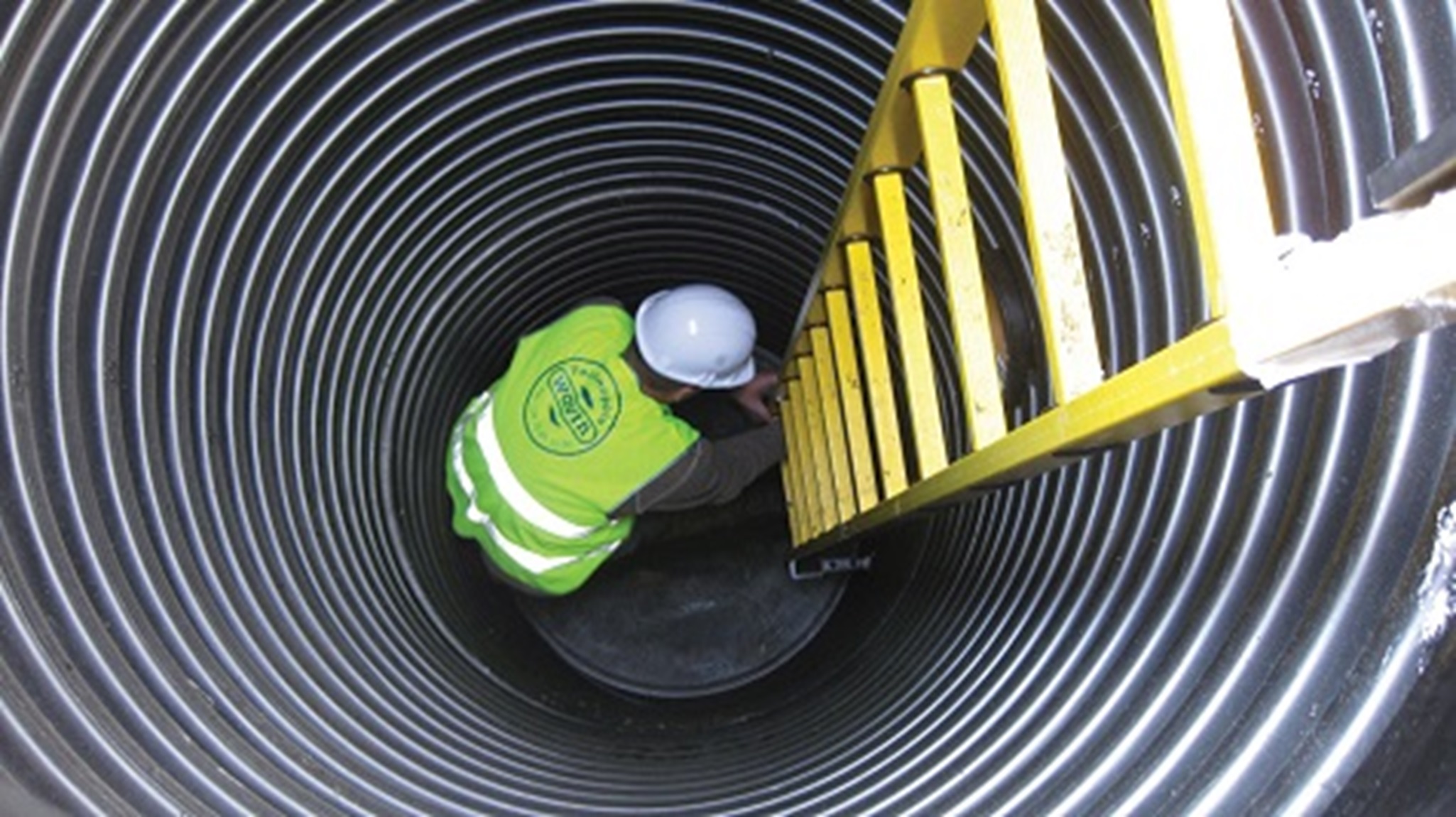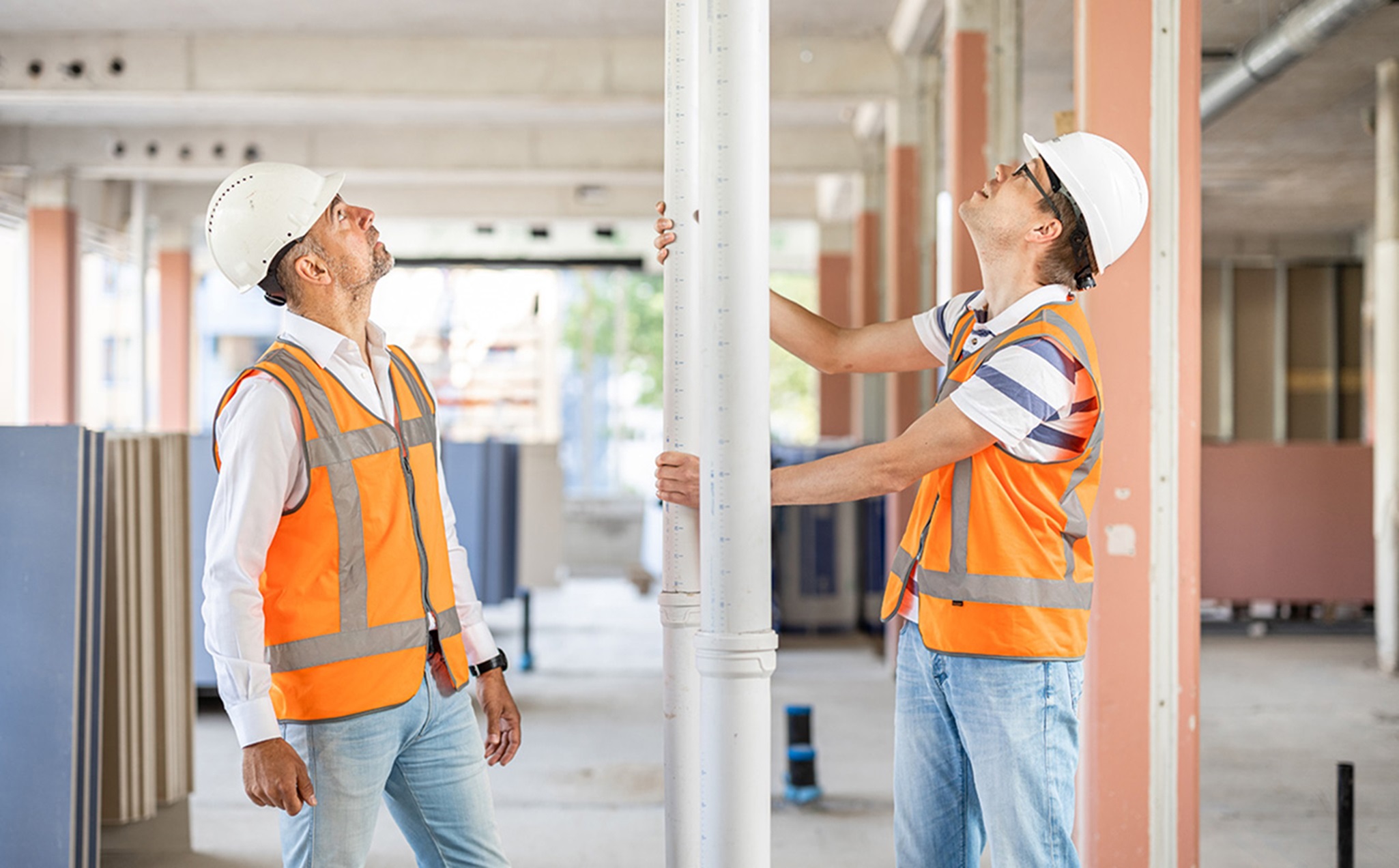Building climate-resilient cities
Today, over half the world’s population lives in urban areas. And, according to the United Nations, that number will grow to two-thirds by 2050. Cities will have to adapt, in order to be safe and sustainable in the face of extreme weather and other climate hazards – like massive, intense rainfalls and severe droughts. Technologies and strategic partnerships will play a key role in transforming our cities by making them greener and more livable. Wavin, with its innovative solutions and commitment to building healthy, sustainable environments, is poised and ready to take on the challenge. And we are in good company. Sustainability pioneers, like Sacha Stolp, Director of Innovation for the Future-Proof Assets Program in Amsterdam, are leading the crusade. One neighborhood at a time. City by city.
Sacha Stolp – Creating a climate-resilient Amsterdam
Cities across the globe are facing serious challenges: dense populations, falling biodiversity, rising sea levels, droughts, energy problems, flooding from frequent and intense rainstorms, and aging infrastructures. Climate crusaders like Sacha Stolp lead the world by example. As Director of Innovation for the Future-Proof Assets Program for the City of Amsterdam, Sacha devotes 100% of her time to one mission: creating a climate-resilient and future-proof Amsterdam by 2050. But time is of the essence. She wants to create new standards… a new normal – in collaboration with universities, knowledge institutions and the business community. And in a limited amount of time, because the climate change clock is ticking. As such, it is her task to prepare the existing city for the consequences of climate change – energy and raw material transition, and the ongoing development of a smart city. Sacha is innovating her socks off. She’s creating living laboratories to scale up innovations and runs tens of pilot projects, as part of 4 assignments: Smart cities, Climate-adaptive cities, Circular cities, Urbanized and dense areas.
Wavin works with Sacha on various pilot projects in Amsterdam and invited her to share knowledge at a global Wavin event in January 2020.
In 100 years from now, the Netherlands will be a land of green cities, circular agriculture, and more forests, water and swamps. A climate-proof Netherlands of this description is not just desirable but also feasibleWageningen researchers Michael van Buuren and Martin Baptist
Answering a climate-resilience “Calling” – Sacha’s “Aha” moments
It wasn’t just one moment that prompted Sacha to follow this path. It was a series of events and it all started quite small. When the financial crisis of 2008 happened, everything collapsed and suddenly all kinds of places with undeveloped land appeared within the city. Sacha’s immediate thought was that we had to do something about these abandoned pieces of land, maybe give back to nature temporarily. Or maybe build a playground or a tree park. At least something sustainable and society-friendly. By connecting with other like-minded people, you can get amazing results. So, Sacha started her own group of four and each brought on three friends. Suddenly, there was a group of 16 people. That became a movement and they called it “Ondertussen” (“Meanwhile”). It led to the Dutch government inviting them to participate in the re-allocation of areas on a larger scale.

Later on, Sacha went to the United States and met Don Hutson at the Cowboy Solution. She was invited for a training session with horses (“How to unleash human potential”), where Don focused on what he referred to as ‘Speed of Trust’. He talked about how to really listen and communicate, in order to get real actions in place, real results. Sacha’s passion for sustainable solutions, combined with her Don Hutson experience, prompted her to move onto bigger projects like the Amsterdam municipality project Zuidas (a big urban development area south of Amsterdam). Being able to convince big project developers to commit to adding green roofs to their buildings, she ultimately became Amsterdam’s frontrunner and main innovator in creating a climate-resilient and future-proof city.
The anatomy of a city
There are not so many big differences between cities, including Amsterdam. Cities are simply clusters of people. And they all have the same need: to live, work, care, learn and relax/recreate. The biggest challenge nowadays is to radically shift our way of thinking, reacting to climate change and adjust to the needs of a rising population.
There are several cities around the world who are frontrunners in climate resiliency. According to Sacha, Vancouver (British Columbia, Canada) is a stellar example. They take local water management (storage) very seriously and were one of the first cities to lay down their blue-green strategy. In all their city projects, they also involve the First Nations (first inhabitants of British Columbia) – representing the long-term interests of people, nature and the seasons themselves. This brings a new and interesting perspective to the city’s blue-green strategy and planning. Collaboration with key stakeholders (like First Nations) is key towards creating and implementing climate resiliency. It’s all about making a connection to all the various stakeholders and – as a team – jointly gathering the right questions that we need to answer in order to build the correct cities of the future. And again, it all starts small. Sacha believes that we have to go from neighborhood to neighborhood until the whole city cluster is circular, climate-resilient, healthy and safe.
We need to future-proof our assets and create new standards. In this process, I ask the questions: How do I build solutions that last - despite things like urbanization, shortage of raw materials, climate changes, digitalization? It's all within my depreciation time! I am making things for 30 years and in 30 years, it will be 2050! Then we have arrived in a completely new world where we are climate-adaptive, circular, carbon neutral, futureproof, smart. I think in 2040 all questions (including the ones we are asking ourselves now) will be completely different.Sacha StolpMeanwhile, in Amsterdam…
The city of Amsterdam has a long-term vision, with 2050 being the target milestone: to become a climate-adaptive, circular, carbon-neutral and future-proof city. The task at hand is big, but Sacha and her team balance it (on a non-stop basis) with smaller, short-term solutions. Creating change in the current dominant system can be challenging, because change can sometimes be a bitter pill to swallow. But by empowering and inspiring collaboration and accountability amongst stakeholders – showing how well some flagship project initiatives work, how they can be scaled up, and what role can each person or group play – this helps to relieve some of the panic and resistance to new ideas and solutions.
Amsterdam is the 4th largest buyer in the Netherlands of civil engineering products. 10% a year can be allocated for pilot projects and launching customer solutions like, for example, Wavin’s new Tegra Road Gully. The pressure on cities is high because of climate change challenges like massive rainfall, and extreme heat and droughts. The design and development of this gully is part of Wavin’s purpose-led ambition to create climate resilient, livable and lovable cities. Wavin is working on multiple gully installations in Amsterdam – installing new road gullies with a special overflow system where rainwater is being used to water trees. By the way, the Wavin gully is made from 100% recycled material.
Although Sacha travels the world to learn about new future-proof solutions that could be a perfect fit for Amsterdam, she would be the first to point out that, conversely, over 150 delegates have been visiting Amsterdam to see what rainwater catchment can do for their cities. In Amsterdam, there are approximately 12 million square meters of rooftops. In one of Amsterdam’s flagship projects (Resilio), 10,000 sqm of rooftops are now equipped with an interactive smart discharge system. So, when rain comes, the rooftops will be discharged – but not all at once or there will be flooding all over again. Gradually, this balance of water catchment and discharge will be in all the buildings of Amsterdam in the future.
The power of personal connection and the urgency of action
Connection is fundamental to our existence. And as urban cities become more populated, connecting with people will become even more important. Increasingly, we are seeing how what you do at work influences your personal life and vice versa. As cities like Amsterdam focus now (today, not just tomorrow) towards their 2050 goal – climate-resiliency, circularity and future-proof – they will realize how connected their efforts are with the challenges faced by people globally. Challenges like safe drinking water, good sanitation and hygiene, climate-resilient cities and better building performance. As leaders and innovators in this industry, Wavin dares customers and stakeholders to embrace new ideas, new innovations, new (and better) solutions for building healthy and livable cities and communities.
And on behalf of the city of Amsterdam and on everything/everyone she holds dear, so does Sacha Stolp.
Let's embrace the challenge. Together, let's try to take one step further compared to our current responsibility. Let's climb the ladder towards tomorrow's questions. It all starts with asking questions. Dare to take that step, especially if you have the frontrunners and you feel energy. Accept the risk. It's like cooking: if you eat the same dish all the time, it's quite a big step to suddenly eat completely vegan. But you can try with little steps and see how it tastes. You start the change. Expanding your palette of taste is always an enrichment for yourself.












